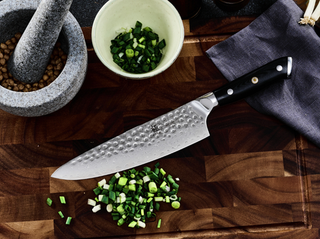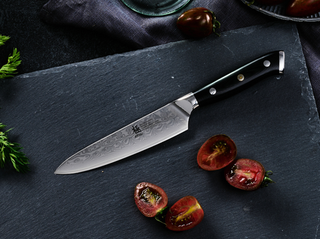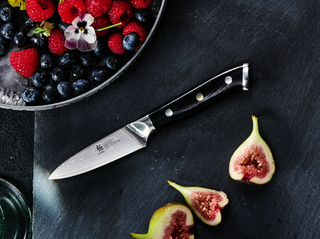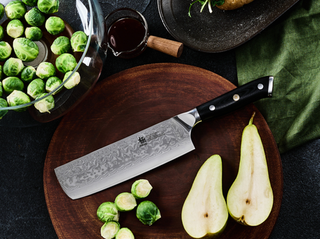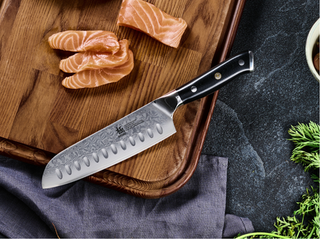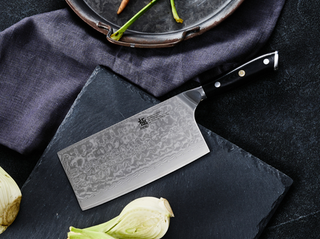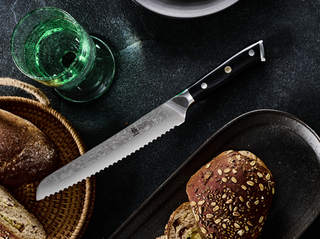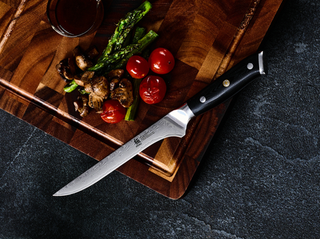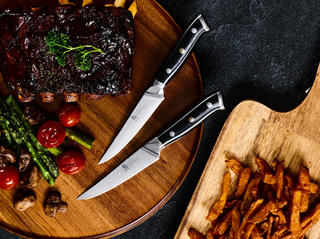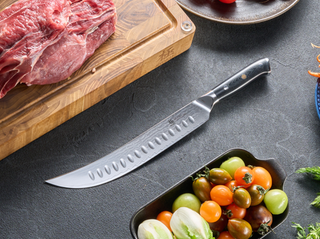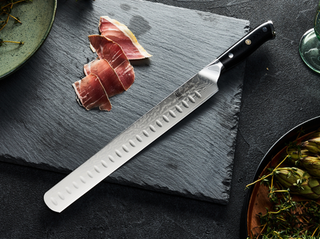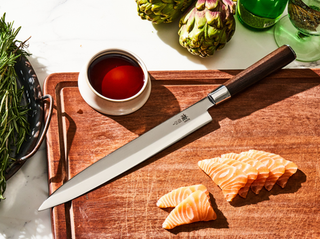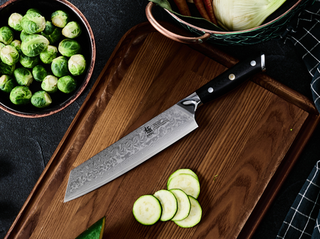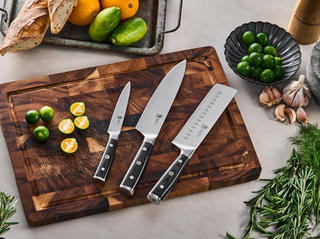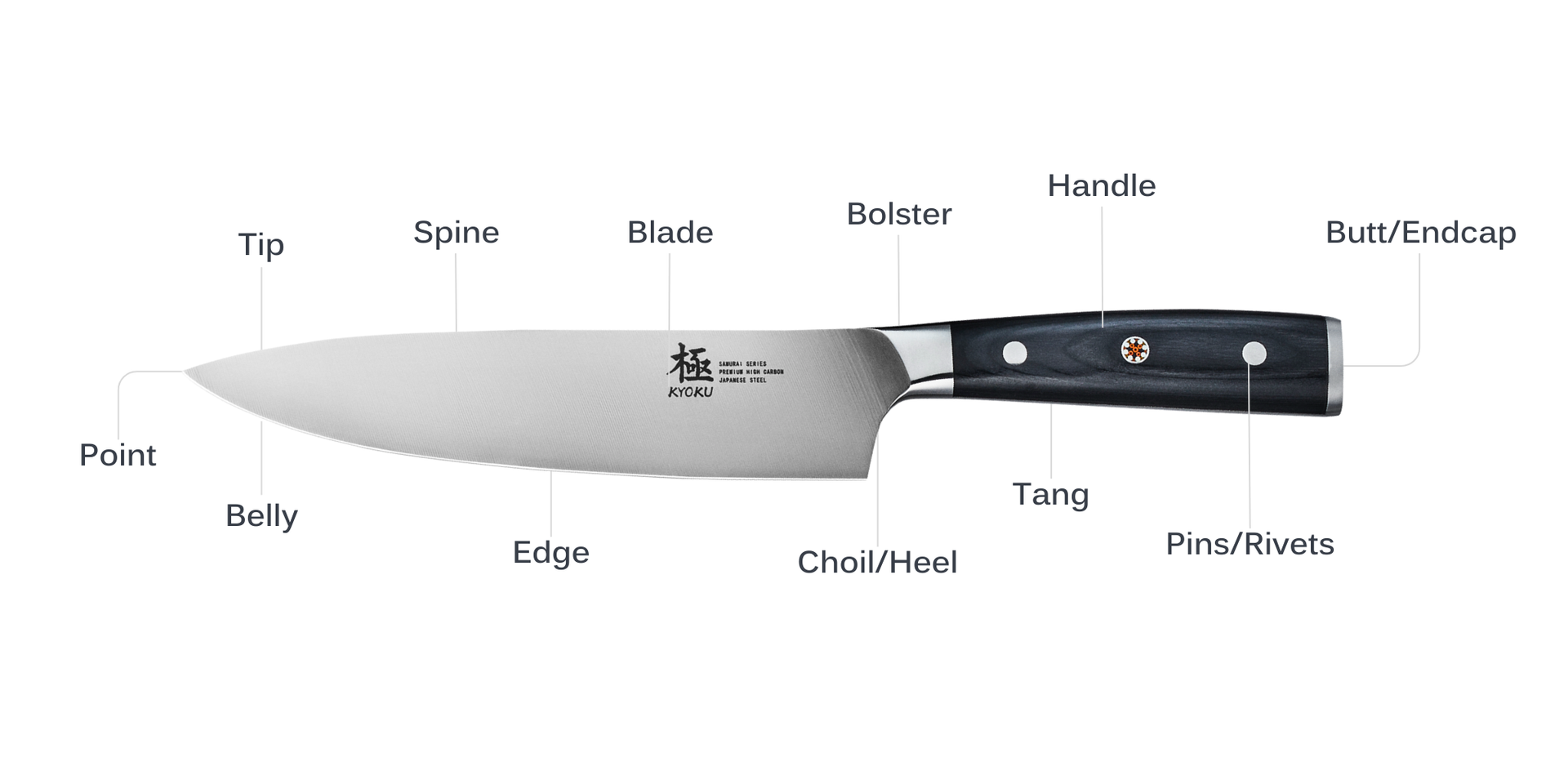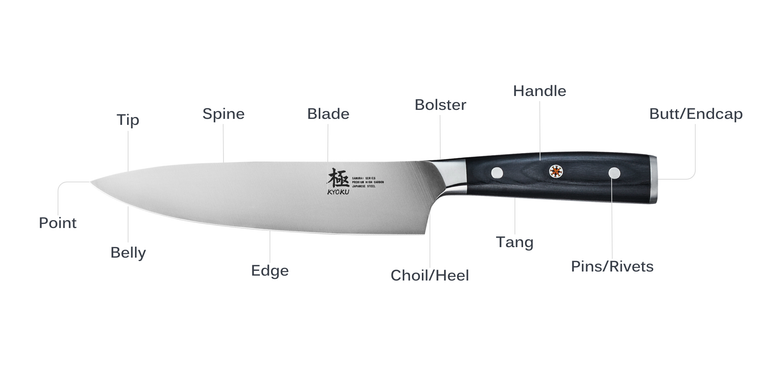Knife ANATOMY
Why Understanding Your Kitchen Knife Matters?
Is it a Western-style chef’s knife or a Japanese santoku? Does it have a full tang or partial tang? Is the edge straight, serrated, or granton? What type of tip does it feature?
These details matter—they define your knife’s performance, balance, and purpose.
Knowing the parts of your kitchen knife and how they function is key to using it safely, effectively, and maintaining it properly.
With countless knife types available today, selecting the right one can be overwhelming—especially if you’re unsure which best suits your needs. Certain knives are specifically designed for certain tasks, delivering better results and making cooking easier and more efficient.
For example, you wouldn’t use a paring knife to carve a roast. It’s impractical, ineffective, and could even be unsafe. The right knife must match the task.
Understanding your knife also improves your skills. Learning how to grip and maneuver it correctly helps you work more safely and quickly.
Clearly, knowing how your knife works helps you get the most out of it—unlocking its full potential in your kitchen.
What Are the Parts of a Kitchen Knife?
Knife terminology can seem complex, but using a typical chef’s knife as a reference—along with labeled parts and descriptions—will help you understand each component’s role.
We can divide a knife into two main sections: the blade and the handle. Each of these is made up of smaller, functional parts.
Point: The point is the front tip of the blade where the spine and the cutting edge meet. It is used for piercing and detailed cutting tasks, such as scoring or deveining.
Tip: The forward point of the blade, designed for piercing and detailed work.
Belly: The belly is the curved section of the blade near the tip. Its design allows for smooth rocking motions during chopping and slicing, making it especially useful for mincing herbs or dicing vegetables.
Spine: The thickest top edge of the blade, providing rigidity and control during precision tasks. In some designs, the spine may be ground partially for certain tasks, though full double-edged blades are rare in kitchen knives.
Blade: The cutting portion of the knife, often with a hard core steel layer surrounded by softer cladding for durability.
Edge: The edge is the sharpened part of the blade responsible for cutting. Keeping it sharp is essential for efficient and safe food preparation. Common edge types include straight, serrated, and granton (dimpled).
Bolster: The bolster is the thickened junction between the blade and the handle. It adds balance, enhances safety by preventing the hand from slipping onto the edge, and contributes to the knife's overall durability.
Choil / Heel: The rear base of the blade where it meets the handle, used for heavy-duty cutting. Some knives feature a larger choil that also serves as a finger rest for improved grip and control.
Tang: The tang is the unsharpened part of the blade that extends into the handle. A full tang runs the entire length and width of the handle, offering superior strength and balance. Partial tangs are shorter and may affect durability. Most high-quality kitchen knives feature a full tang construction.
Handle: The part gripped by the user, typically made of wood, polymer, or composite materials.
Pins/Rivets: Metal pins or screws securing the handle scales to the tang.
Butt: The terminal part of the handle, often rounded or contoured for ergonomic grip and balance.
